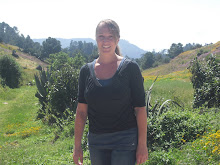After returning from studying the use of restorative justice in Mexico ’s juvenile justice system, I began working as a mediator in a California California
Court mediation sessions are quick, they emphasize speed over quality, and mediators are trained to take a cookie-cutter approach to crafting plans and agreements, whether or not these plans are best suited for the needs of the parties involved. I have come to think of these court processes as the McDonalds version of mediation. I have heard other mediators tell people, “If you need more time to reach an agreement, you’ll need to hire a private mediator. We only have an hour and a half to help you here.” That’s not much time to work out an agreement between two people entrenched in conflict. Unfortunately, private mediators charge hundreds of dollars per hour and are not accessible to much of the general public.
My mind wanders back to the mediation trainings I have attended, and the importance of meeting with the parties individually in order to prepare for the mediation session. I remember the mediation sessions I observed in Mexico
Maybe it’s a cultural issue – in the United States
Restorative justice advocates warn that one of the greatest risks of restorative justice is that it will be co-opted, or implemented in such a way that it loses its values, or its essence. Sadly, that seems to be what I’m seeing in this mediation program.








